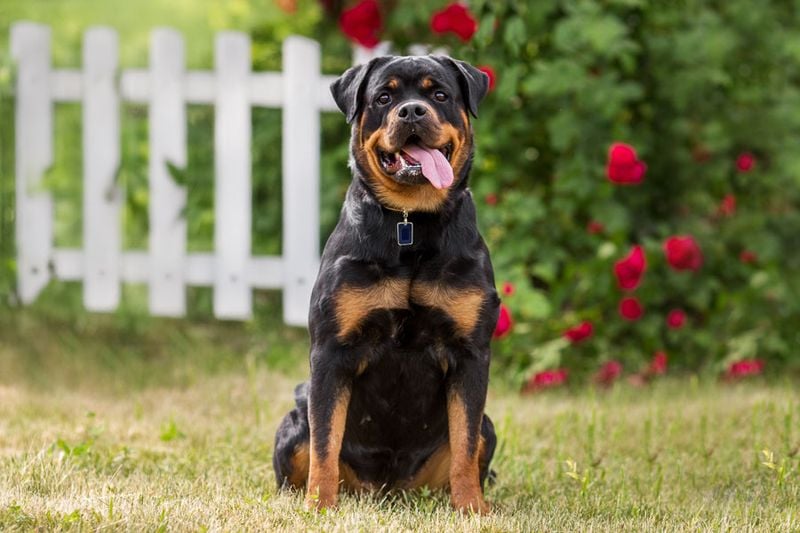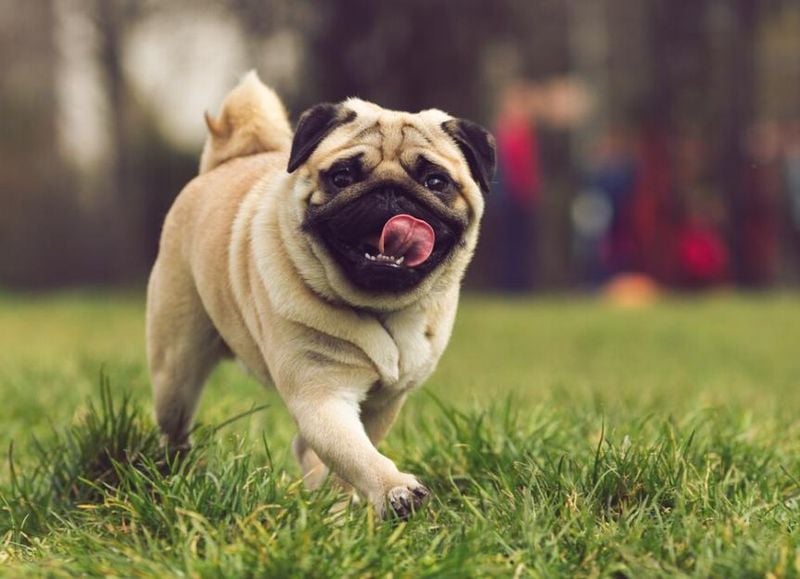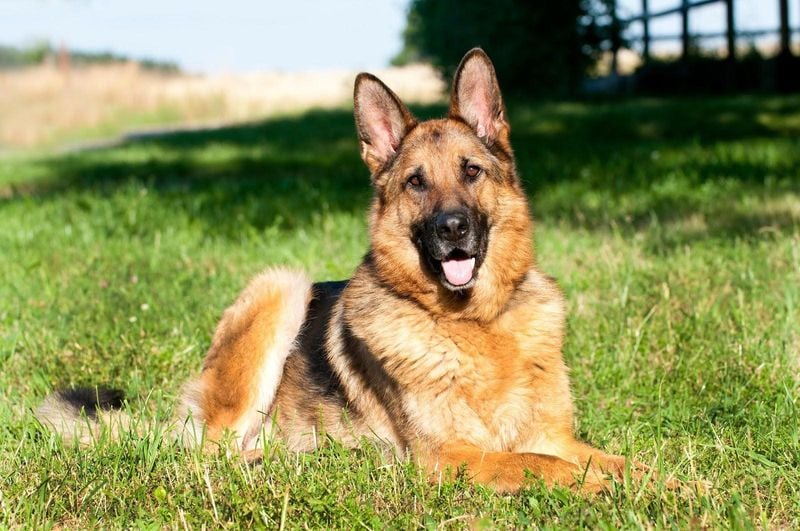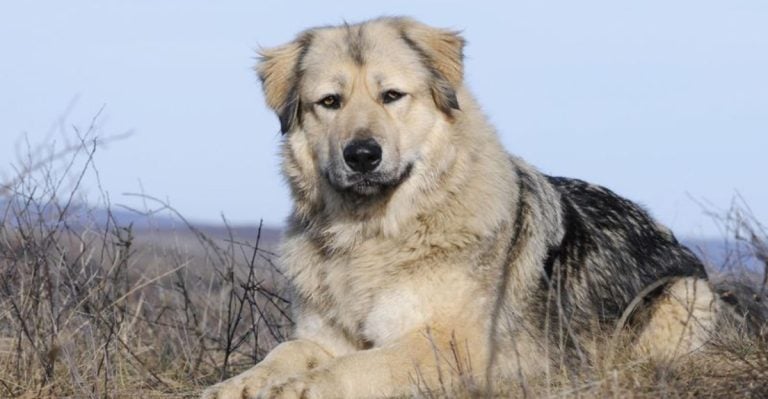15 Popular Breeds with the Highest Risk for Medical Problems
Many families welcome dogs into their homes without knowing the potential health issues certain breeds face. Genetics, breeding practices, and physical characteristics all play a role in determining which dogs might need extra trips to the vet.
Understanding these risks before choosing a pet can help you prepare for possible medical costs and special care requirements. This guide explores popular dog breeds that unfortunately tend to experience more health problems than others.
1. Boxer
Athletic and energetic companions, these medium-sized dogs unfortunately face several serious health challenges. Cancer rates are alarmingly high, with many boxers developing mast cell tumors, lymphoma, or brain tumors before reaching old age.
Heart problems, particularly arrhythmogenic right ventricular cardiomyopathy (ARVC), often affect this breed and can lead to sudden death. Their short muzzles also make them prone to breathing difficulties and heat intolerance.
Hip dysplasia and thyroid issues round out the list of common concerns. Despite these challenges, proper screening and regular veterinary care can help boxers live happier, healthier lives, though their lifespan typically ranges from 10-12 years.
2. Dachshund
Lovingly nicknamed “wiener dogs” for their elongated bodies, these spunky little hounds pay a steep price for their unique shape. Their long backs and short legs create the perfect storm for intervertebral disc disease (IVDD), affecting nearly 25% of all dachshunds.
When discs rupture or herniate, these pups may experience extreme pain, paralysis, or loss of bladder control. Weight management becomes crucial for these dogs, as extra pounds put dangerous pressure on their already vulnerable spines.
Beyond back problems, dachshunds commonly battle dental disease, eye issues, and patellar luxation. Many owners find themselves restricting their dachshund from jumping on and off furniture to protect their fragile spines.
3. Rottweiler
Powerful and loyal guardians, these robust dogs unfortunately rank high for orthopedic issues that can severely impact their mobility. Hip and elbow dysplasia frequently plague the breed, causing painful joint deterioration as they age.
Cancer represents another serious threat, with osteosarcoma (bone cancer) being particularly common. Rottweilers also have an elevated risk for heart conditions like aortic stenosis and dilated cardiomyopathy.
Cruciate ligament tears occur at higher rates in this breed, often requiring expensive surgical intervention. Despite their imposing appearance and strength, many Rottweilers develop these health issues before reaching their tenth birthday, making comprehensive health testing for breeding stock absolutely essential.
4. Pug
Those adorable wrinkled faces and bulging eyes come with serious respiratory challenges. Brachycephalic Obstructive Airway Syndrome (BOAS) affects nearly all pugs to some degree, causing breathing difficulties, snoring, exercise intolerance, and vulnerability to heat stroke.
Eye problems are remarkably common due to their protruding eyes, which can develop corneal ulcers or even pop out of their sockets during rough play. Skin fold dermatitis develops in those cute facial wrinkles when moisture gets trapped.
Obesity frequently compounds these health issues, putting additional stress on their already compromised breathing. Many pugs require specialized veterinary care throughout their lives, and some even need surgical intervention to widen their nostrils or shorten their soft palate just to breathe more comfortably.
5. Bulldog
Behind that charming, wrinkled face lies a breed plagued by health concerns stemming from extreme physical characteristics. Severe breathing difficulties top the list, with many bulldogs struggling to take normal breaths due to their compressed airways and flat faces.
Overheating becomes dangerous even in mild temperatures because they cannot pant effectively to cool down. Skin infections fester in their deep wrinkles without daily cleaning and maintenance.
Reproductive issues are so severe that most bulldogs cannot mate or give birth naturally – nearly all require artificial insemination and cesarean sections. Joint problems, heart defects, and eye issues further complicate their health picture, giving bulldogs one of the shortest lifespans among medium-sized breeds at just 8-10 years.
6. Golden Retriever
Beloved for their friendly temperament and beautiful coats, these family favorites unfortunately face a heartbreaking cancer crisis. Studies show over 60% of Golden Retrievers eventually develop cancer – significantly higher than most other breeds.
Hemangiosarcoma, lymphoma, and mast cell tumors appear with alarming frequency, often cutting their lives short. Hip and elbow dysplasia commonly cause pain and mobility issues as they age, requiring medication or sometimes surgery.
Allergies and skin problems frequently plague the breed, leading to uncomfortable itching and secondary infections. Despite these serious health concerns, proper breeding practices, regular veterinary screenings, and maintaining healthy weight can help maximize their typically 10-12 year lifespan.
7. Cavalier King Charles Spaniel
Sweet-natured and gentle, these beautiful companions carry a devastating genetic predisposition to heart disease. Mitral valve disease affects nearly all Cavaliers by age 10, causing progressive heart failure as their heart valves deteriorate.
Syringomyelia, a serious neurological condition where the skull is too small for the brain, creates painful pressure on the spinal cord. Affected dogs may yelp in pain, scratch at their necks, or develop an unusual gait.
Eye problems like cataracts and retinal issues frequently develop as they age. Despite careful breeding efforts, these health challenges persist, giving this loving breed one of the shorter lifespans among small dogs, typically 9-14 years, with heart disease being the leading cause of death.
8. German Shepherd
Working intelligence and loyalty define these versatile dogs, but their sloped backs often lead to debilitating hip and elbow dysplasia. Many develop degenerative myelopathy, a progressive spinal cord disease causing eventual paralysis in older dogs.
Digestive sensitivity plagues the breed, with many suffering from chronic pancreatitis, exocrine pancreatic insufficiency, or inflammatory bowel disease. Bloat (gastric dilatation-volvulus) presents a life-threatening emergency when their stomachs twist, requiring immediate surgery.
Allergies and skin problems frequently cause discomfort and secondary infections. Responsible breeding focusing on healthier body structures and comprehensive genetic testing can help reduce these risks, though the breed’s average lifespan remains 9-13 years with many requiring medication for joint pain in their senior years.
9. Shih Tzu
Underneath that luxurious flowing coat hides a breed prone to numerous health challenges. Breathing difficulties occur frequently due to their shortened muzzles, causing snoring, exercise intolerance, and vulnerability to heat stroke.
Eye problems develop at high rates, with many Shih Tzus experiencing corneal ulcers, progressive retinal atrophy, or dry eye. Their prominent eyes can easily become injured or infected without proper care.
Dental disease advances rapidly in their small mouths, often leading to tooth loss without diligent home care and professional cleanings. Intervertebral disc disease, kidney stones, and allergies round out their common health concerns. Daily grooming becomes essential not just for appearance but to prevent painful skin infections in their facial folds and under their dense coats.
10. French Bulldog
Skyrocketing in popularity despite severe health challenges, these bat-eared companions struggle with extreme breathing difficulties. Their flat faces and narrow nostrils force many to breathe through their mouths, causing snoring, exercise intolerance, and heat sensitivity.
Spinal problems, particularly intervertebral disc disease, frequently cause pain or paralysis. Their unusual body shape contributes to reproductive difficulties – most Frenchies require artificial insemination and cesarean sections to reproduce.
Allergies and skin fold infections develop in those adorable wrinkles without daily cleaning. Eye problems, dental disease, and joint issues further complicate their health picture. Many owners face difficult decisions regarding expensive corrective surgeries for breathing or mobility, with health-related costs often exceeding the already high purchase price.
11. Yorkshire Terrier
Tiny but mighty, these pint-sized companions pack several health concerns into their small frames. Dental disease develops rapidly in their crowded mouths, often leading to tooth loss before middle age without excellent dental care.
Collapsed trachea causes a characteristic honking cough when excited or pulling against a collar. This progressive condition can severely impact breathing quality and exercise tolerance over time.
Luxating patellas (kneecaps that slip out of place) cause that distinctive skip in their step and may eventually require surgical correction. Liver shunts, hypoglycemia, and eye problems further complicate their health picture. Despite these challenges, with proper veterinary care, these feisty little dogs can live 12-15 years, though many require specialized diets and medications as they age.
12. Beagle
Cheerful and food-motivated, these popular hunting dogs battle significant health challenges throughout their lives. Obesity tops the list of concerns, as their enthusiastic appetite and persuasive begging skills often lead to dangerous weight gain.
Intervertebral disc disease affects many beagles, causing back pain or even paralysis when discs rupture. Epilepsy appears at higher rates in this breed, requiring lifelong medication to control seizures.
Cherry eye, a prolapsed gland of the third eyelid, creates that distinctive red bulge in the corner of their eyes. Hypothyroidism, ear infections, and allergies round out their common health issues. Regular exercise and strict portion control become essential for maintaining healthy weight in this breed known for its impressive food motivation.
13. Chihuahua
Tiny bodies mean outsized health problems for the world’s smallest dog breed. Dental disease progresses rapidly in their tiny mouths, with many losing most teeth by middle age without exceptional dental care.
Heart murmurs and valve problems occur at high rates, with patent ductus arteriosus and mitral valve disease being particularly common. Their fragile bones break easily from even short falls or jumps off furniture.
Hydrocephalus (water on the brain) affects some Chihuahuas, causing their characteristic apple-shaped heads but potentially leading to neurological problems. Hypoglycemia can become life-threatening, especially in puppies who may need frequent feeding. Despite these challenges, with proper care and protection from injuries, Chihuahuas often live 14-16 years, though many require special accommodations like ramps and steps to navigate homes safely.
14. Doberman Pinscher
Sleek and powerful, these loyal guardians face a devastating heart condition that cuts many lives short. Dilated cardiomyopathy affects Dobermans at alarming rates, with some studies suggesting up to 50% may develop this often-fatal heart disease.
von Willebrand’s disease, a blood clotting disorder, puts affected dogs at risk during surgery or injury. Wobbler syndrome (cervical vertebral instability) causes a distinctive wobbly gait and neck pain that can progress to paralysis.
Hypothyroidism frequently develops in middle age, causing weight gain, lethargy, and skin problems. Color dilution alopecia affects blue and fawn Dobermans, causing patchy hair loss and skin infections. Regular cardiac screenings become essential for this breed whose average lifespan has unfortunately decreased to 8-10 years primarily due to heart disease.
15. Labrador Retriever
America’s favorite family dog hides several significant health challenges beneath that friendly, food-loving exterior. Obesity affects over 60% of Labs, putting dangerous strain on their joints and internal organs.
Hip and elbow dysplasia cause painful arthritis and mobility issues, often requiring medication or surgery. Exercise-induced collapse affects some Labs, causing them to suddenly lose coordination and collapse during intense activity.
Progressive retinal atrophy can lead to blindness, while cataracts cloud their vision in later years. Ear infections develop frequently due to their love of swimming and their floppy ear structure. Despite these concerns, with proper weight management and regular veterinary care, Labs typically live 10-14 years, though many develop joint pain requiring medication in their senior years.





















